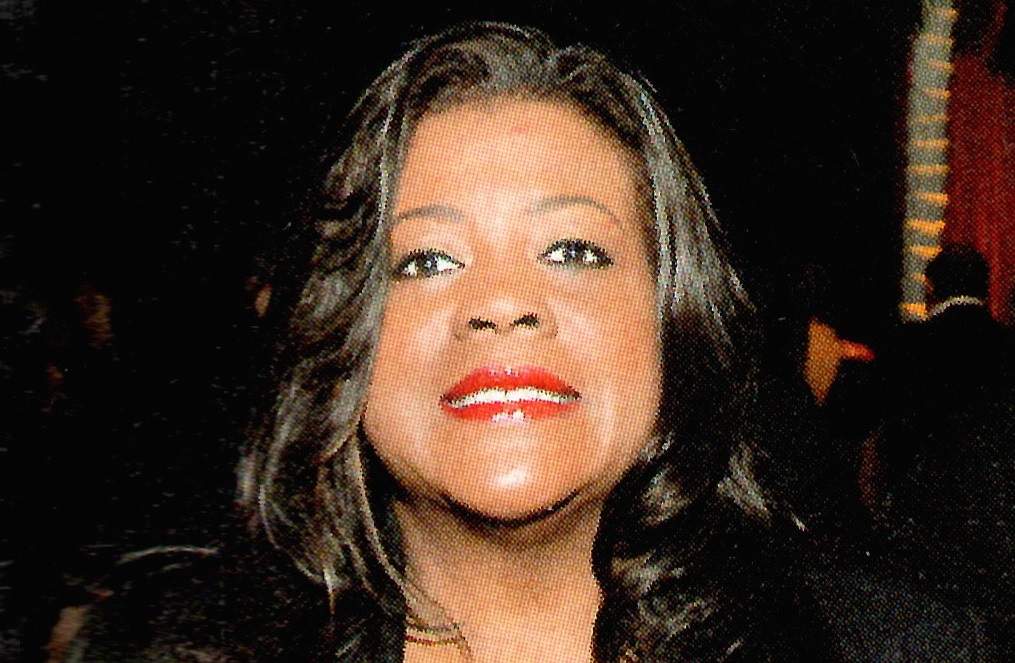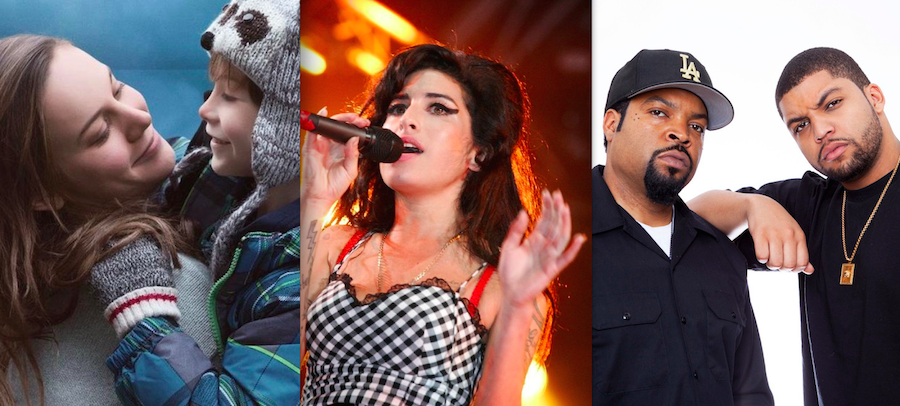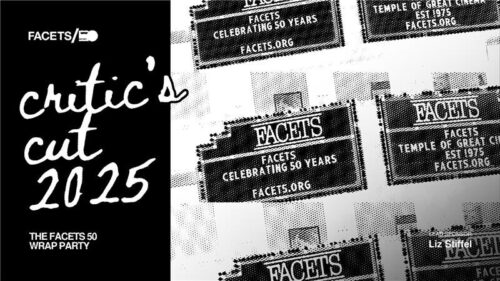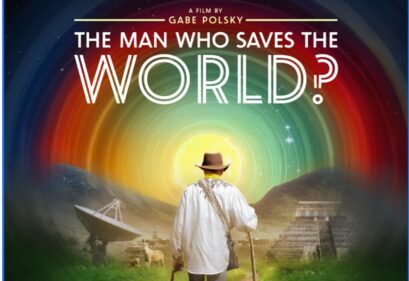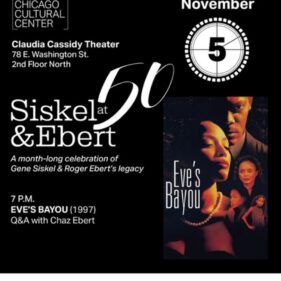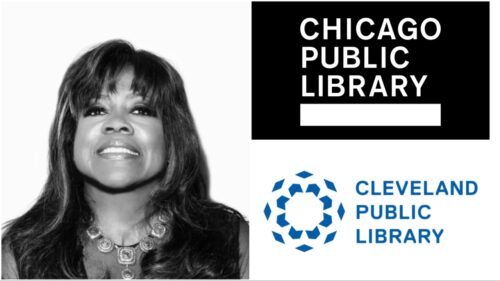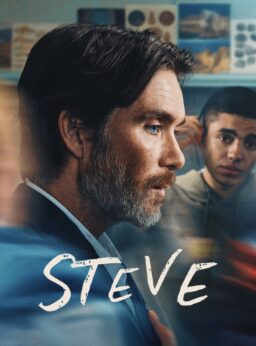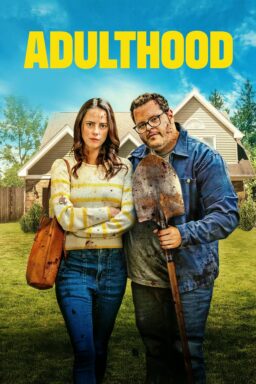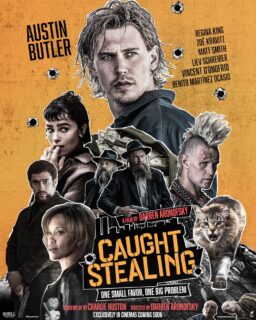I have a friend whose mother is legally deaf. Her mother told her that since she couldn’t hear with her ears, she listened with her heart. That way the intent rather than the content came through and she could judge people and situations more accurately. I decided to take that approach with various films I saw this year at press screenings and film festivals including Cannes, Telluride, Toronto and Ebertfest. This is not my top movies list of 2015, but rather, a list of sixteen films well worth remembering. There was something about these films that made me feel something, that rearranged the molecules of my heart and made me feel better leaving the theater than I did when I entered. Sometimes that is all I ask. I have not arranged them in any particular order but the films are: “Room” “99 Homes,” “He Named Me Malala,” “Miss You Already,” “Brooklyn,” “Amy,” “The Diary of a Teenage Girl,” “Sembene!”, “Carol,” “Grandma,” “The End of The Tour,” “Son of Saul,” “Seymour,” “Inside Out,” “Where To Invade Next” and “Straight Outta Compton.”
As I watched the screen, I opened my heart to the images and the underlying messages. At times I even closed my eyes to feel what was being conveyed by the words, and to determine whether the words matched the action on the screen. I allowed the films to simply wash over me and engage my senses. What a lovely and lively all-enveloping experience. Surprisingly, my assessments of which parts of the movies worked and for what reasons differed from those times when I was watching movies to write a review. I felt no particular need to intellectualize or make sense of the cinematic quality, although these films certainly were wonderfully cinematic. For some of the films on this list I thought about what if: what if we all pitched in and made this world a better place. How would that look? And sometimes my heart soared just because of the strong female characters and their bonds of friendship through thick and thin. In the case of films that were earnest, intense, deeply involving human dramas, I felt as if I was there.
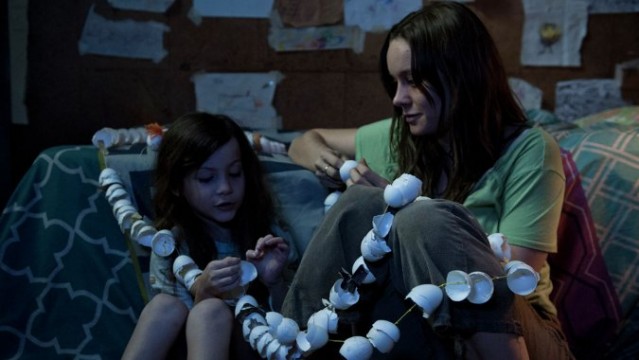
1. ROOM
Trying this approach with “Room,” was actually frightening, as it allowed the tension created by director Lenny Abrahamson to become palpable. It is the story of a mother and son locked in a shelter by her kidnapper, and forced to live as captives in one room. The boy doesn’t know this since he was born there and had never stepped outside of its four walls. This was his universe, the only existence he had ever known. Ma, played by Brie Larson in a very moving performance, was his protector, his mother lioness, structuring this magical world of make believe for him. Since the only three-dimensional human beings he had ever seen were Ma and “Old Nick,” their captor, he thought TV people and any life outside of Room had to be from another planet.
As I listened with my heart, I absorbed the deep connection of the mother-son bond, and saw how she not only protected him, but depended on him for her own sanity. How having him gave her a reason for living, and kept alive the dream that he wouldn’t have to live there forever. When I listened with my heart, I was pleasantly surprised how Abrahamson, and perhaps the writer of the story, Emma Donoghue, so strictly hewed the story to that of the love between a mother and her son. The captor remains a cipher, and that is as it should be.
In real life situations of captivity, we sometimes obsess too much about the background of the criminal. We dissect everything he ever said or did, ostensibly so that we can see if there were clues where we could have intervened. But most often we do it just for the ratings or the voyeurism.
In “Room,” the kidnapper is more of a background figure, often shot from behind or glimpsed through the slats of a closet door. We don’t get to see where he goes when he is not in Room, or what he thinks about, or whether he has a family, or where he works. We don’t care. And later, he is referred to, but not really seen. We stay interested in the real tale of survival between the mother and son, which makes a certain action Ma takes later in the movie all the more sad and shocking. Some people questioned whether it made sense. But when I listened with my heart, I could understand how the years of desperation drove her to do what she did.
The performance by little Jacob Tremblay is simply astonishing. We believe him. His actions, his words, his questions. His contentment with his cloistered life is that of an innocent as unaware of life on earth as we are about life on Mars. The director credits Brie Larson’s generosity with helping to get Jacob to focus so that he could give his all in each scene. I don’t want to give away too much of the story except to say that the arc of the story is deepened by the supporting characters, two of whom are acclaimed actors Joan Allen and William H. Macy.
“Room” was adapted from a novel by Emma Donoghue who also wrote the screenplay. In addition to her official site, EmmaDonaghue.com, she maintained a blog, “Emma’s Corner,” that focused on the making of the film.
Read Susan Wloszczyna’s review of “Room” here.

2. 99 HOMES
Back in April, we presented one of the first U.S. screenings for Ramin Bahrani‘s timely drama, “99 Homes,” at Ebertfest. It places a human face on the recent shameful period in our nation when the bundling of stock derivatives and irresponsible loans caused an economic housing bubble that resulted in the loss of homes by thousands of people all over the country. It chronicles the plight of a lower-middle class family, led by Laura Dern (whose earnest intensity breaks your heart), who lives with her son (Andrew Garfield), a single dad raising his son (Noah Lomax). When they are evicted from their home, Garfield desperately seeks employment from the very same man (Michael Shannon) who evicted him. It’s a classic “deal with the devil” scenario, and Bahrani places us directly in the heat of the moment, as Garfield is forced to ask his neighbors to leave their homes. Some of these scenes are so painful that I actually had to turn away from the screen, yet my heart remained tuned in to every aching beat of Bahrani’s well-crafted tale. The acting in this movie is first rate. It’s the sort of filmmaking that transcends the usual boundaries that define us on a political or ideological level. People can debate issues all they want, but the impact of raw emotion is inarguable.
I have seen the film two or three times, and one thought still goes back to the last statement made by Michael Shannon’s character, “It’s a fine thing you did son.” What did he mean? Was he being sarcastic or truthful? Did he have a change of heart? We will never know.
I am grateful to Ramin Bahrani for dedicating this film to Roger. He had a chance to tell Roger about the making of the film when he visited Roger in the hospital on Christmas Day, 2012, in a moment captured in Steve James’s documentary about Roger, “Life Itself.” But Roger never saw the movie. I can say with absolute certainty, Ramin, that Roger would have approved of it.
Read Brian Tallerico’s Toronto review of “99 Homes” here.

3. HE NAMED ME MALALA
Another movie that greatly moved my heart was the documentary, “He Named Me Malala.” Davis Guggenheim (“An Inconvenient Truth“; “Waiting For Superman”) tells the story of Malala Yousafzai, the Pakistani girl who was shot by the Taliban because she spoke out about wanting an education for herself and other girls in Pakistan. Watching Malala grow in her resolve to advocate for education and equality—even after being left in a coma with months of rehabilitation to regain the ability to speak and walk—was the highest inspiration. Malala’s beauty shines brightly, even though the bullets and the surgery altered her visage. I was fascinated by the warm bond between Malala and her father. It was he who gifted her with the name of the rebellious female warrior who was part myth and part truth and who had to die for her beliefs. When Guggenheim introduces the mythical Malala for whom our heroine is named, it is in animated vignettes that somehow add to the strength of the tale.
I like the fact that we also get to see Malala as an ordinary teenage girl playing board games with her brothers and mother and father at home. And even sneaking peeks at cute boys on her computer. We learn that she admires Brad Pitt, David Beckham and cricketeer Shahid Afridi. But like any shy teenage girl with a crush, she blushes with embarrassment for us to witness this. She is human after all, and shares the same needs and wants as the rest of us.
But to see her courage in going forward to advocate on behalf of children in other nations makes it impossible to watch her without being reduced to tears, particularly during her triumphant speech to the United Nations. What a truly remarkable young woman.
Read Matt Fagerholm’s interview with David Guggenheim here.

4. MISS YOU ALREADY
Catherine Hardwicke’s “Miss You Already” is a joyous exploration of the friendship between two lifelong friends who share everything (oddly enough, even the loss of their virginity–don’t ask), until the friendship becomes fractured by illness and a pregnancy. Women friends are usually loyal until the end. And there is a saying that a husband may leave you, but a true girlfriend is there for the duration. Does that sound quaint or even sexist? No matter, there’s a lot of truth to it.
The film’s two lead actresses, Toni Collette and Drew Barrymore, have screen personas that are so inherently lovable, you feel as if they have been your friends as well. They meet cute in grade school when Barrymore transfers to a school in England and meets Collette on the first day. She saves her from being picked on for her lack of a proper English accent. Some critics have found the scenes showing their friendship blossoming through the years a bit manipulative, but it establishes the solidity of their relationship. And I admired the authentic feeling of girlfriends created by a female director (Hardwicke) and female writer (Morwenna Banks). If you have ever had a real true-blue friend, this just rings true.
I admired Hardwicke’s work in “Thirteen,” and also the first “Twilight.” She has a knack for bringing real human emotions to the screen while entertaining you at the same time. “Miss You” is certainly entertaining. One of the friends even gets to marry her rock star, while the other is saving the world. But the closeness of their friendship makes their suffering in the film all the more poignant. Is some of the plot calculating? Well it left me a blubbering mess. Who cares if you are being manipulated if it is done well, as it is here. I left the theater and immediately texted messages to women friends telling them we should go see this movie together.
Read Susan Wloszczyna’s review of “Miss You Already” here.

5. BROOKLYN
One of the great surprises of 2015 has been the remarkable number of fully dimensional female characters featured at the forefront of numerous pictures. Not only are they the subject of the films, but the stories are viewed largely from their perspective. John Crowley’s lovely drama, “Brooklyn,” invites us to feel the glow of newfound love as experienced by a wide-eyed Irish immigrant (Saoirse Ronan) seeking to make a new life for herself in America. From its bold color palate to its expressive score, this film is an unabashedly old-fashioned piece of entertainment, yet never in a kitschy sense. It reminds us of how a good love story can sweep up our emotions without resorting to sexual explicitness or vulgar gags. After proving her talents in various previous pictures, especially “Atonement” and “Hanna,” Ronan positively blossoms here, exuding both the innocence of youth and the hard-earned wisdom of budding adulthood.
“Brooklyn” is peopled with actors who bring their full charm. Ronan is pursued by two sincere lovers. Emory Cohen, Ronan’s American beau, resembles a young, sweet, innocent Johnny Depp. And Ronan’s Irish beau, played by Domhnall Gleeson, is more sophisticated and cultured, but no less lovely and sincere. The scenes in the boarding house are priceless with the headmistress played by Julie Walters spouting her folk wisdom and cautionary tales to single young women at the dinner table each evening. Even the scenes in the department store are lit just right and add a romantic glow to the movie. As are the sadder scenes in Ireland. This movie is just all around lovely.
Read Glenn Kenny’s review of “Brooklyn” here.

6. AMY
Late night hosts have often made a habit of taunting celebrities when their lives begin to go off the rails. We are encouraged to mock them, as if their personal lives were as valid a source of entertainment as their onscreen work. I am so sorry that most Americans became aware of Amy Winehouse when her life was becoming fodder for the tabloids, around the time of her smash hit, “Rehab.” Asif Kapadia’s electrifying documentary, “Amy,” will surely serve as a remedy to that. It explores the life of the brilliant singer who succumbed to alcohol poisoning at age 27, primarily through the use of existing archival footage. And how fortunate we are that there is so much to see.
We become absolutely engrossed when observing the chanteuse on her own terms. We see her as a teenager, already exhibiting the prodigious talent that will shine briefly on a world stage. She smiles her gap-toothed smile and charms her friends and family in ordinary situations. The earlier scenes are easy-going and hopeful. It is only because we know the ending to the story that we begin to notice the rifts in her relationship with her father, and wonder later if the faith she perhaps misplaced in her husband was a substitute for it.
I could have watched twice as much footage of her auditions and her singing gigs. The best parts show her life devoid of the sensationalistic filter provided by paparazzi. You don’t want to miss the captivating time she spent with Tony Bennett, where she was apprehensive about not being able to live up to his standards, and he had to put her at ease. But too soon we see her lusting for the fame and the love (and the drugs and alcohol) that will prove to be her undoing.
I agree with Salaam Remi that Amy had one of the most beautiful bluesy, jazzy voices. So talented. So sad to lose her.
Read Susan Wloszczyna’s review of “Amy” here.

7. THE DIARY OF A TEENAGE GIRL
A film that won me over with its honesty and courageousness was Marielle Heller’s “The Diary of a Teenage Girl,” an under-seen gem that took a startlingly frank look at the sexual coming-of-age of a 15-year-old girl (played brilliantly by Bel Powley). I have to admit this film did cause some soul searching and raised eyebrows because she loses her virginity to her mother’s boyfriend (Alexander Skarsgård), a man twice her age. And as a firm protector of children I would normally see this as horrific. In fact, most filmmakers would portray such a shocking event in stark terms, shedding light on the horror of abuse, yet Heller takes an entirely different approach. Her story is about a young woman learning to own her sexuality while discovering her self-worth. It’s a story of survival rather than victimhood, and its message flies right in the face of the global stigmatization that still strives to repress women, shaming them from embracing their sexuality. Listening to this film with your heart may lead you to get in touch with your younger self as well, and the steps you took toward molding your own adult identity.
Read Sheila O’Malley’s review of “The Diary of a Teenage Girl” here.

8. SEMBENE!
One of my favorite films that we’ve screened at Ebertfest is “Moolaade,” the final masterwork in the career of Ousmane Sembene, a Sengalese director widely considered to be “the father of African cinema.” We screened the film at Ebertfest in 2007, two months before Sembene’s death. Sembene was one of the first filmmakers to make films about Africans for Africans. This was considered revolutionary at the time. Yet, the man, not the icon, was not always easy to get along with. This year, Senegalese professor Samba Gadjigo, Sembene’s official biographer, and Jason Silverman have made a documentary, “Sembene!“, that pays heartfelt tribute to the director’s towering legacy. When I listened with my heart, I could actually feel the director’s passion for his filmmaking, and his respect for the people he filmed. One of the things that was shocking to discover in the documentary is that Sembene’s films and artifacts were rotting and disintegrating in his home after his death. Fortunately Gadjigo and Silverman have also embarked upon a mission to preserve them. But they will need all the help they can get.
Read Matt Zoller Seitz’s review of “Sembene!” here.

9. CAROL
Listening with your heart can sometimes be the direct route toward enabling you to empathize with someone that you might consider different in real life. It’s fitting that in the same year gay marriage was legalized by the Supreme Court, we’ve seen more films humanizing same sex relationships. Perhaps the most acclaimed of all is Todd Haynes‘s Cannes prize-winner, “Carol,” starring Rooney Mara as a department store clerk in 1950’s-era America who becomes infatuated with an older married woman (Cate Blanchett). The gorgeous photography of the period-specific decor is by acclaimed cinematographer Ed Lachman. He and Todd Haynes capture a sublime beauty in both actresses that serve to heighten their allure. Rooney Mara gives an Oscar caliber performance at a time when the love that dare not say its name could get you put in jail. And Cate Blanchett’s motivation is also heartbreaking because the loss of her daughter is at stake.
Read Scout Tafoya’s NYFF review of “Carol” here.

10. GRANDMA
In Paul Weitz’s “Grandma,” not only did the film succeed in endearing us to the character of a bad-tempered lesbian septuagenarian (a very funny Lily Tomlin), but it tackled the abortion issue in a way that never felt preachy. As Tomlin struggles to find money for her granddaughter’s scheduled abortion, the film never trivializes the gravity of the situation. Regardless of your own beliefs regarding the issue, the film leaves with you a lot to think about—and a lot to feel.
Read Glenn Kenny’s review of “Grandma” here.
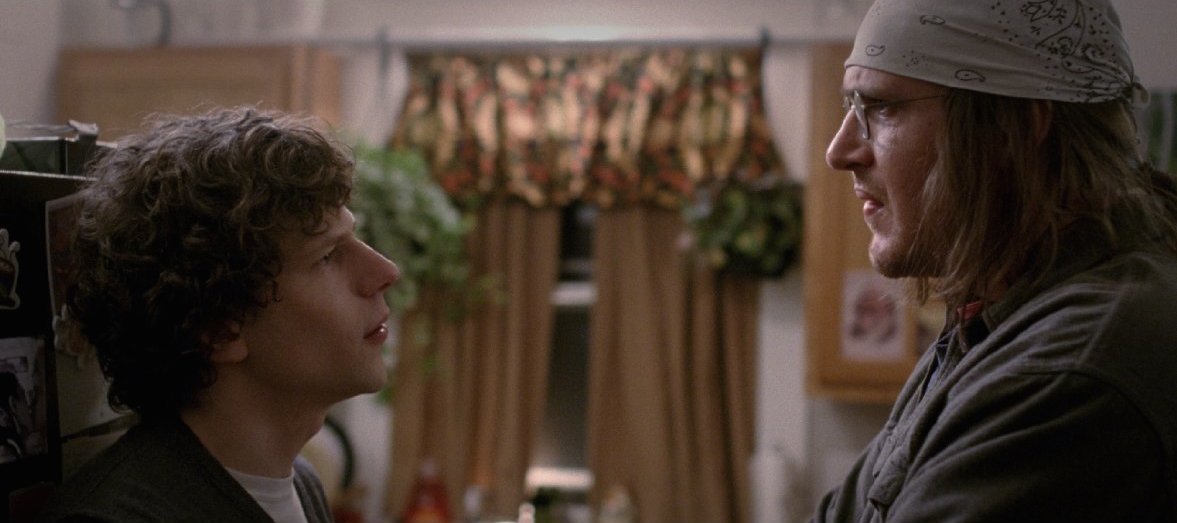
11. THE END OF THE TOUR
There have also been some memorable films this year that have dealt with the essence of the human connection between strangers. James Ponsoldt’s “The End of the Tour,” with performances by Jason Segal as iconic author David Foster Wallace and Jesse Eisenberg as Rolling Stone reporter David Lipsky, is one of them. This is another film which played to rousing applause at Ebertfest this year. The script by Donald Margulies is among the year’s best. It was adapted from a book by Lipsky, who transcribed his conversations with Wallace. The dialogue in this film captures the nuances of their unlikely bond so acutely that it could work equally well as a radio play. By listening to these men speak, we see their souls laid bare.
Read Brian Tallerico’s Sundance review of “The End of the Tour” here.

12. SON OF SAUL
When I was at Cannes this past May, one film that people wouldn’t stop talking about was László Nemes’s viscerally powerful Holocaust drama, “Son of Saul.” Perhaps it was because Mátyás Erdély’s cinematography places the viewer directly in the midst of the chaos in the crematorium. Perhaps it was because this first time director found a story that no one could turn away from–having to bury the body of someone you know. But this is during the Holocaust when such blessings (kaddish) are not said. In fact, you have to dehumanize the people and pretend they are just so much cargo. Heartbreaking.
Read Barbara Scharres’s Cannes review of “Son of Saul” here.

13. SEYMOUR: AN INTRODUCTION
One of the most direct ways of listening with your heart is allowing yourself to get emotionally swept up in the melody of great music. Our Ebertfest audience experienced that at this year’s closing screening of Ethan Hawke’s superb documentary, “Seymour: An Introduction.” Just as so many aspects of Amy Winehouse are reflected in her own music, so much of Seymour is revealed in how his hands press against the keys of his piano, creating symphonic sounds so entrancing that you hang onto every note. The stunning piece he performs during the film’s finale earned an ovation. But your heart hears the toll it has taken on Seymour before he decides to become a music teacher. We witness some of the disappointments and frustrations Seymour experienced on his road to determining where his responsibility as an artist ended and his responsibility to his authentic self began. How much of himself could he give over to his audience before losing himself. Seymour was delightful in the film and even more delightful as a guest. His energy and enthusiasm were a delight. Definitely heart expanding.
Read Brian Tallerico’s Toronto review of “Seymour: An Introduction” here.

14. INSIDE OUT
In this year’s Pixar movie, “Inside Out,” we get to look inside the mind of a 12-year-old girl and see firsthand how the emotions at her mental control panel affect everything she does and says. And by the time she is experiencing depression, we are experiencing it, too. In the screening I attended, I heard many sniffles and moans that were not just on the screen. And likewise, when she emerged from her depression, so did we. This is one of the best movies incorporating empathy, and illustrating the difference between sympathy and empathy. It never felt like it condescended to its audience and had something for both children and adults alike.
Read Matt Zoller Seitz’s review of “Inside Out” here.

15. WHERE TO INVADE NEXT
I watched Michael Moore’s latest film, “Where to Invade Next,” for a second time at the Chicago International Film Festival, to prepare to moderate a Q&A with him. The first time I saw it at Toronto I had some questions about what it was that caused it to differ so much from some of his other films. But this time it hit me: this is perhaps Moore’s most optimistic film to date. Moore travels to various countries, France, Iceland, Norway, Germany, Slovenia, Portugal, Tunisia and Italy pinpointing foreign policies that America would benefit from implementing. The policies varied from how much vacation time workers are given, to how to truly rehabilitate prisoners so that they are fit to return to society.
Once Moore finds a policy he thinks should be adopted by America, he plants a flag as a souvenir of his “invasion.” Although some of it plays a little hokey, this is no joke. Watching the movie a second time (listening with my heart), I had to admit that yes, I want to know why American school children aren’t taught the proper nutrition and served foods as wholesome and delicious as French children. And why aren’t there more institutions of higher education open to students with little money. And what if America had to acknowledge its slave-owning history with plaques and education rather than sweep it under the rug and say let bygones be bygones. And would the banking and housing crisis have been less severe if more financial institutions had been run by women as they were in Iceland. (During their crisis, only the women owned banks did well. All of the banks and financial institutions run by men were forced into bankruptcy.)
And the biggest kicker of all comes when Moore identifies America as the source of some of these very ideals. Moore was listening with his heart, and inviting his audience to do the same.
Read Tina Hassannia’s Toronto review of “Where to Invade Next” here.

16. STRAIGHT OUTTA COMPTON
Some years back a rap group named NWA was banned from performing their song “Eff” The Police. They were held up to scorn for saying that driving while Black, walking while Black, and just being Black could get you harassed, arrested or worse. And then we heard about Trayvon Martin and Eric Garner and Michael Brown and Sandra Bland, and so when the movie “Straight Outta Compton” made its way to the big screen recently, we saw a change. There were a spate of stories about how the general public finally understood and identified with the frustration the rappers were trying to express years ago. How could this happen in this country? And what are we going to do about it? When we listened with our hearts we saw young men who wanted to share in the American dream. Young men who were harassed because of the color of their skin. Besides being entertaining, it was eye-opening.
Read Odie Henderson’s review of “Straight Outta Compton” here.
